I’ve always been a Mac user, even through the Dark Times. Here’s the story of what it was like growing up in a Mac family.
My dad worked in IT and so from the early days of personal computers he had access to bring computers home over the weekend for us to try. I remember trying out a classic form factor Macintosh (not sure which one), some kind of amber-screened luggable PC, and the luggable Macintosh Portable.
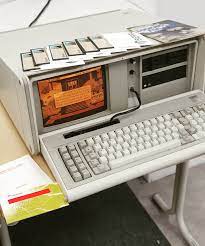
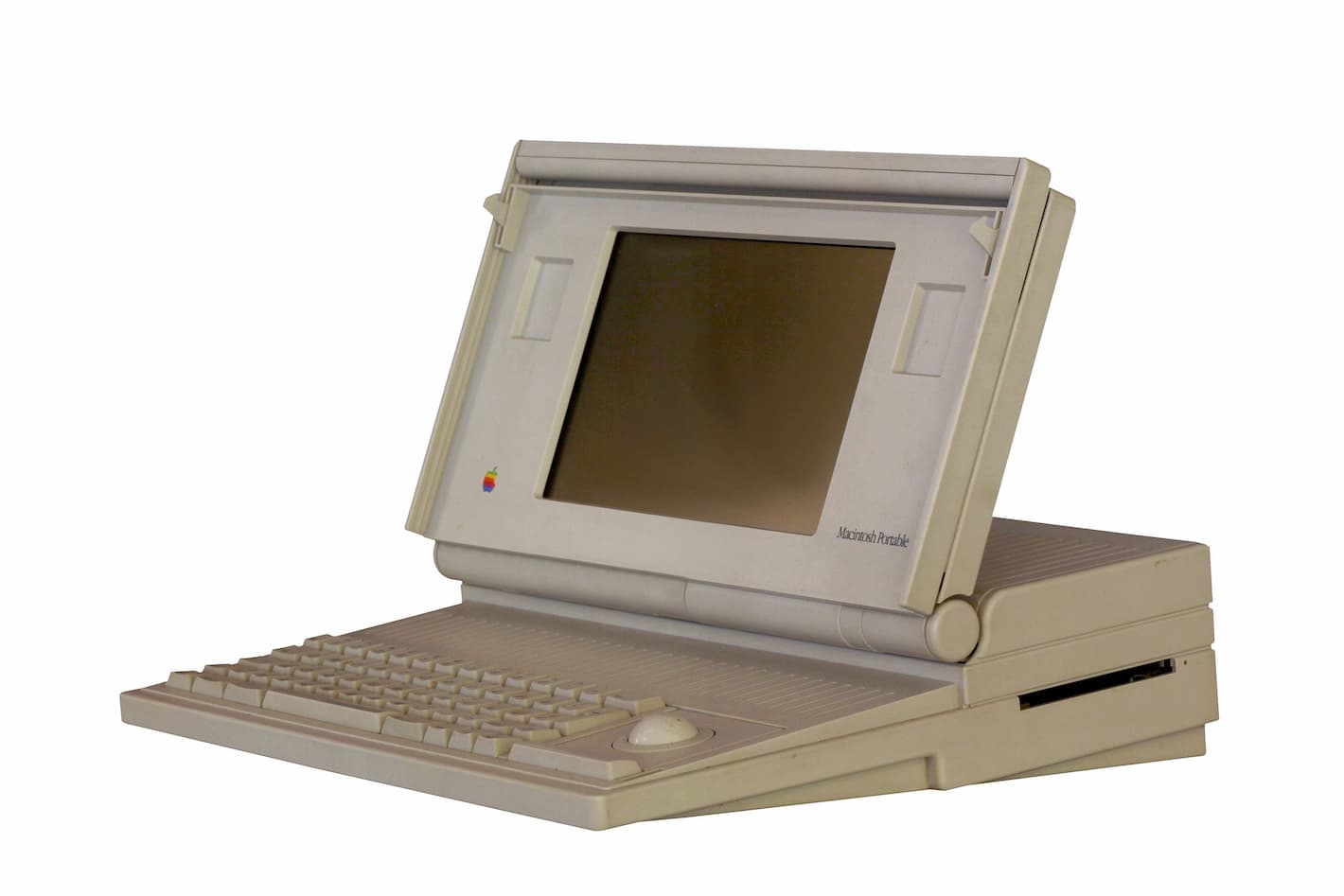
My dad was always a Macintosh person. GUIs were the way computers should be, IBM PCs were lame, and Steve Jobs was a visionary. I think my dad was just the target market for the early Mac: technical enough to be interested in computers and even have access to them professionally, but not so technical that he wanted to use the command line or build his own computer.
Despite my dad’s Mac proclivities, the first computer I remember our family owning was an IBM PCjr (pronounced “PC Junior”). The enemy! But it was probably more affordable.
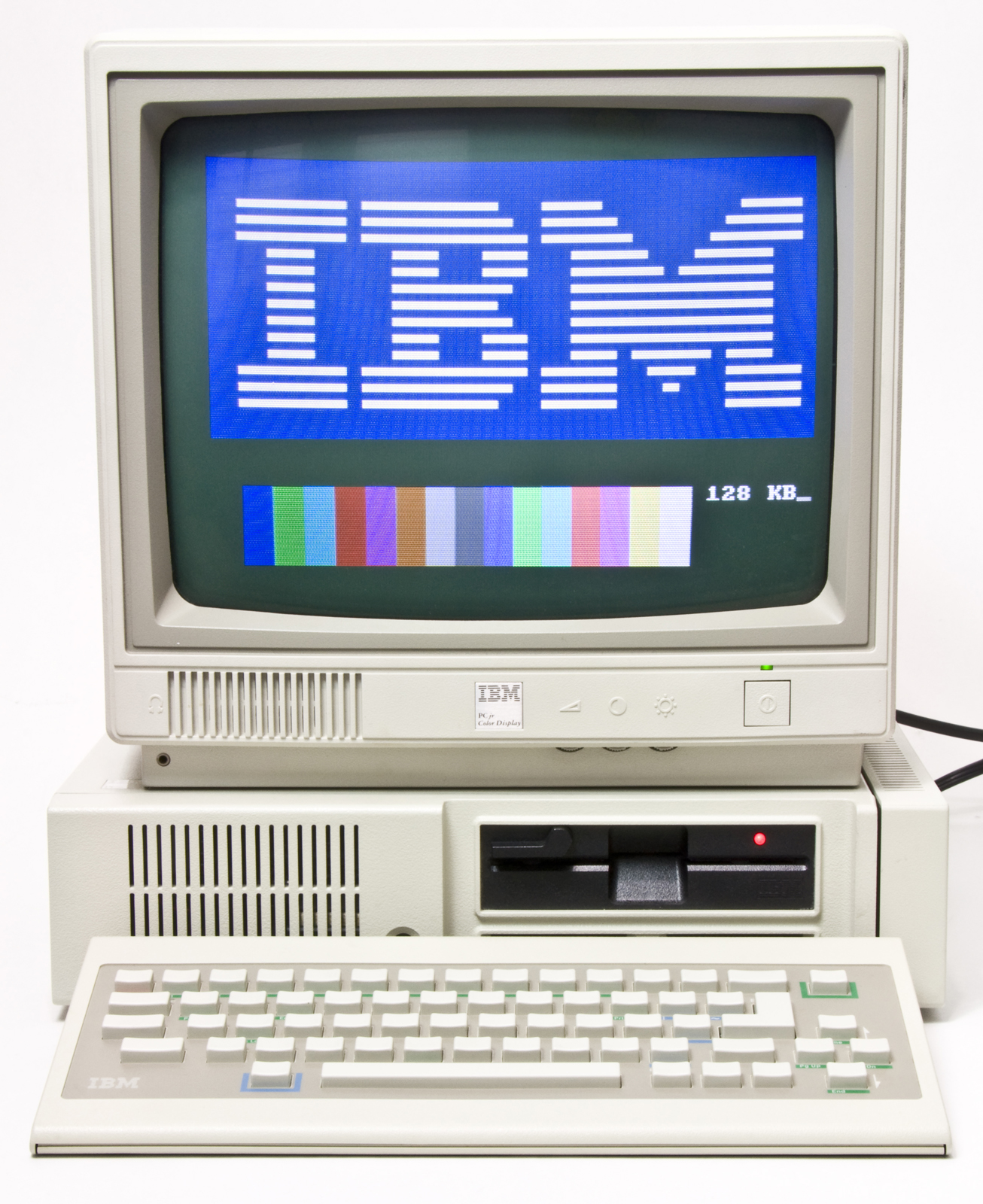
We probably owned a Mac after that, but the first Mac I remember us getting was a Quadra 660AV. I had asked my dad if we could get one, and he asked me to do research and make a case for why that was the computer for us to get. I was able to make the case, and we got one. This is surprising: I recently looked it up and discovered that Quadra was basically the pro line of computers; “av” was for audio and video inputs which were still rare in computers at the time. I don’t think we ever did anything with those input capabilities, though. Apparently this computer straddled the line of the high-end Macs and midrange (it was first called the “Centris 660AV”, where Centris was the midrange line). So why did we get such a high-powered machine? I expect that my dad really wanted to get it, and having his kid be interested enough to make a case for it was the justification he needed.
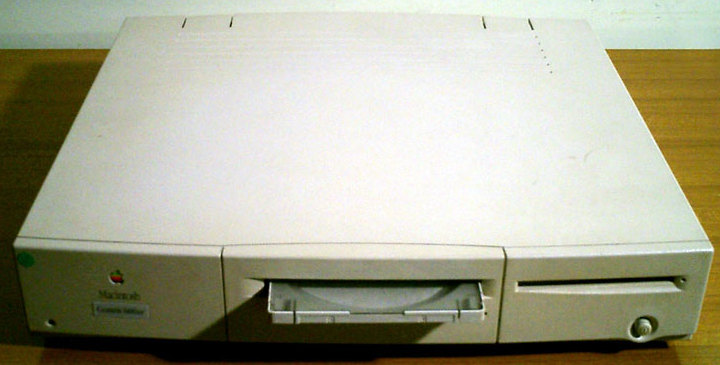
When there were spare laptops at work, my dad would bring them home. Before the days of Wi-Fi we ran Ethernet cables between my brothers’ bedrooms and mine, and we would play LAN parties in Marathon, an FPS that originated on the Mac.

We live outside of Atlanta, Georgia, and it’s a big enough city that there was an Atlanta Macintosh Users’ Group. Back before the World Wide Web took off, BBSes (bulletin board systems) were a way to get online, interact with other computer users, and download software. AMUG had a BBS, and it was a common place for me to download game demos and software updates.

We would occasionally attend AMUG in-person meetings when there was a good guest speaker. One time the developers of a popular Mac game Jump Raven were there. They drew tickets to give away their games. My dad got picked, and he chose their second game that we didn’t have yet. Then I got picked, and my dad told me not to come back and sit next to him or else folks would say it was unfair we won twice! They only had two games, and we already had their first one, so afterward we went up and talked to them and asked if they had anything else. The developer had a copy of Myst (not by his company!) in his bag, so he gave me that instead!
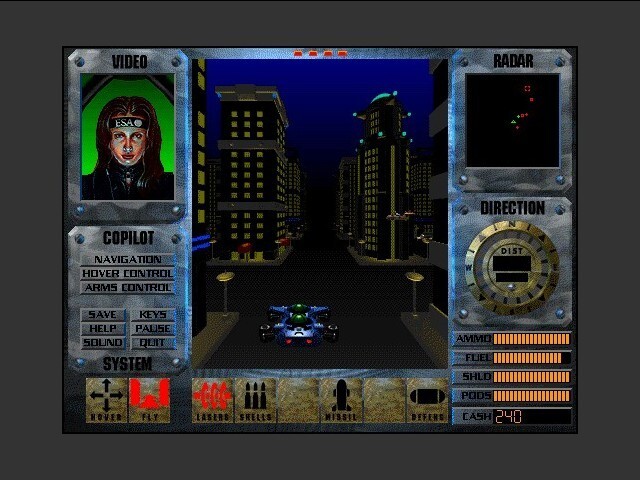
At one point my dad and I went to Macworld Expo, the main Macintosh event. I’m not sure what year it was, but 1995 is likely. I remember buying a copy of BBEdit, a popular text and code editor for the Mac, and it came with a t-shirt that said “BBEdit: it still doesn’t suck.” I also bought a copy of Metrowerks CodeWarrior, a software development environment from back when you still had to pay for things like that. This was in the middle of the Clone Wars, and I remember seeing a lot of Power Computing and other clone hardware.
At the time, Apple worked with a design firm called frogdesign to design their computers. Often they would make concept designs that wouldn’t turn into real computers but would get us excited about the possibilities. In the late 90s, when I was in high school, the World Wide Web was just taking off, and I worked over the summers for my dad’s company and then another company doing web development. Around this time, Apple released a computer, and to me it looked like a frogdesign concept made real. The Twentieth Anniversary Mac:
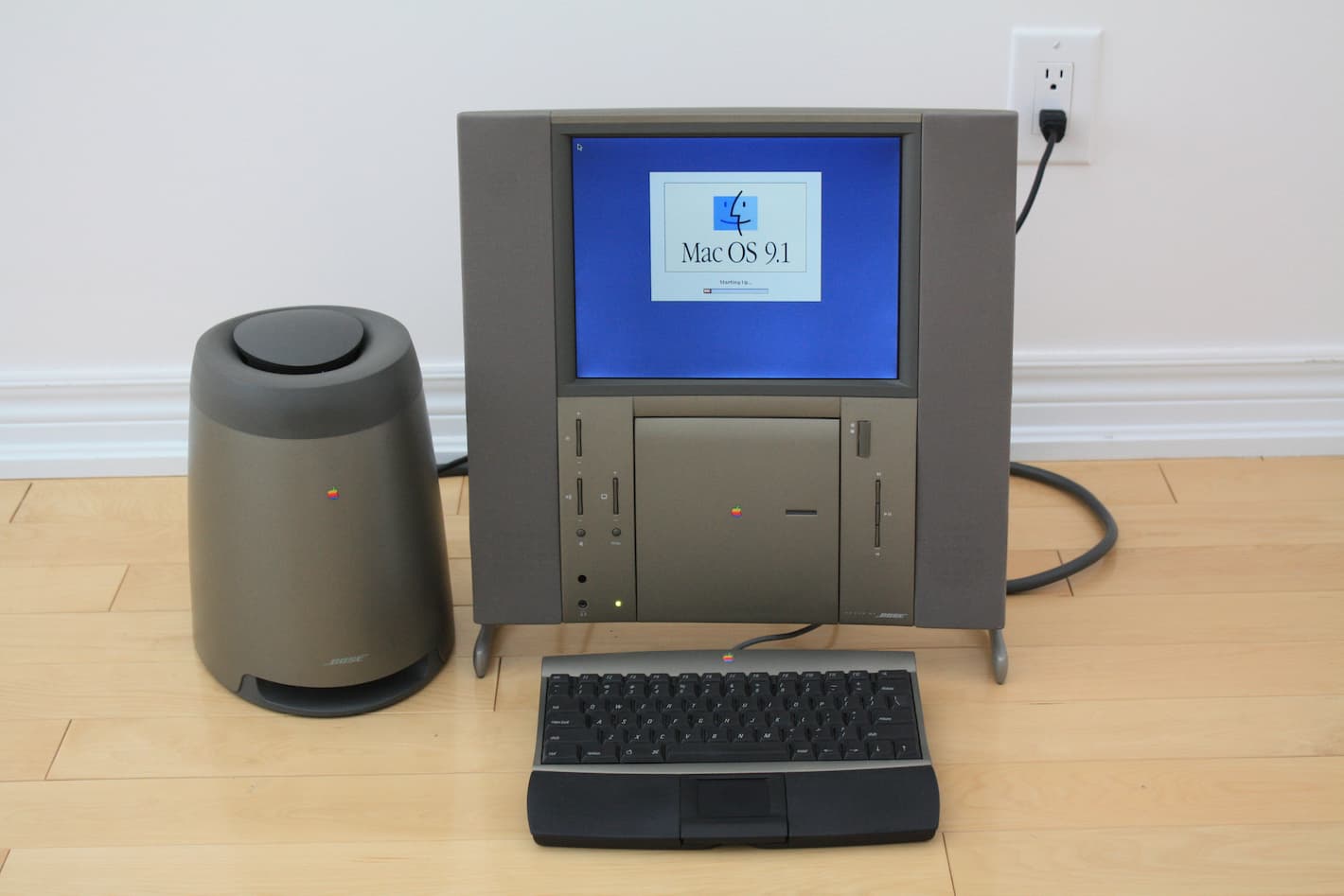
It looked great, but its processor was already two generations old at the time: it was a PowerPC 603, but the 604 and G3 were already out. What’s more, it was priced at eight THOUSAND dollars! I daydreamed about owning one but it wasn’t going to happen at that price. Later, they understandably dropped the price to $4000. I had that much saved up from my summer web dev jobs, but it still seemed like too much to pay for those specs. Then they dropped the price to $2000, and I immediately bought it. I still have the TAM to this day, and it works great!
Not long after that, though, we realized we would need a more powerful computer, so we bought a family PowerPC G3, the desktop form factor.

Apple had an office in Atlanta, and still does. We went to the office to watch a Steve Jobs keynote in 1999. That year, he introduced the first laptop with wifi, the iBook, by picking it up off the podium and carrying it around while it was still connected to the internet. It was a pretty dramatic reveal.

When I was getting ready for senior year of high school, I decided it was time to buy a laptop with my web dev savings. I had enough saved up that I was able to buy the absolutely the maxed-out PowerBook at the time: a clamshell G3. I even sprung for the $500 CompUSA full 3-year warranty. That paid off 2 and a half years later when it fell off a chair and was damaged; they replaced it with an equivalent 14” iBook.
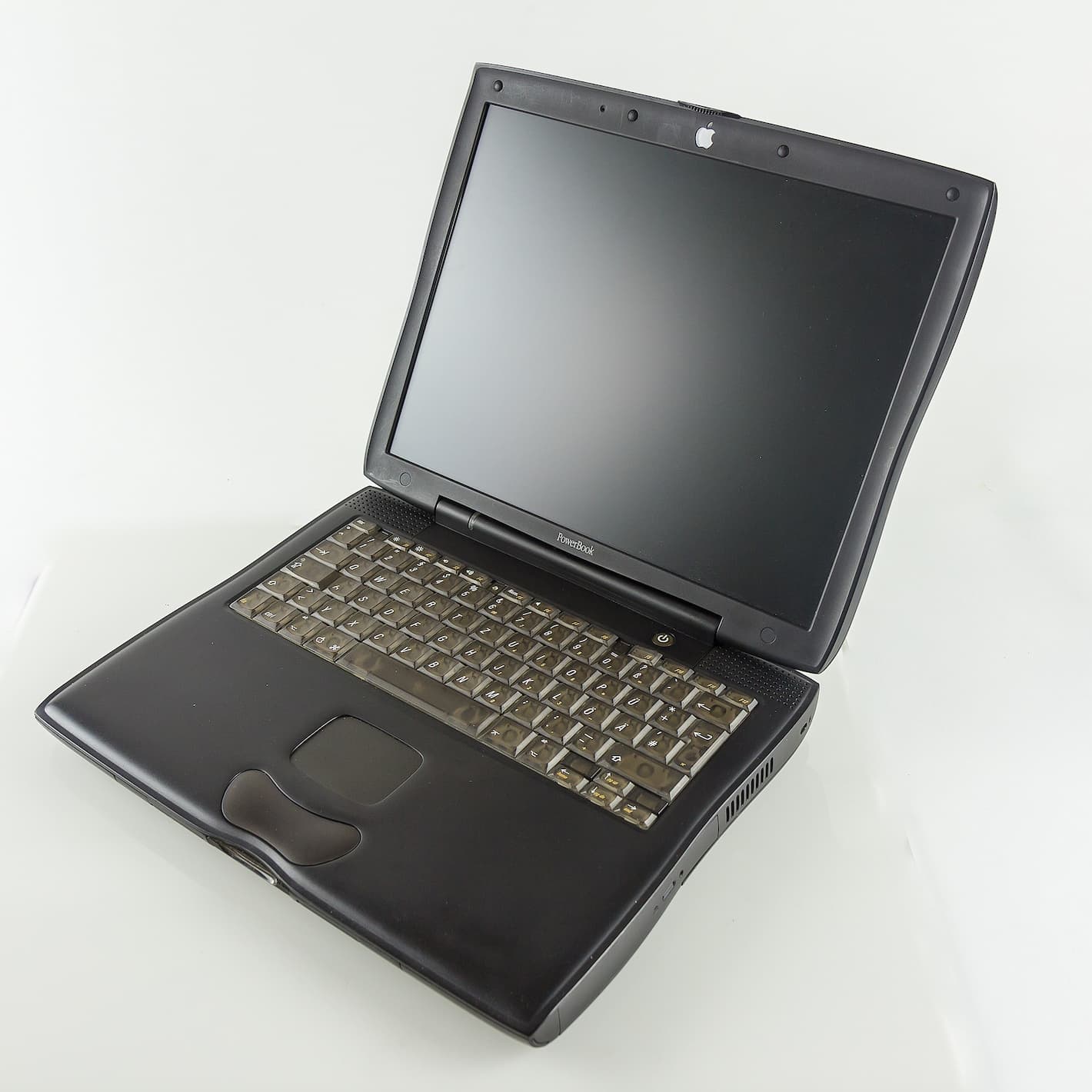
Since then I’ve had a series of Apple laptops, most of them through work. I’ve also had two different Mac minis to serve as a home file and print server.
A few years ago, before I started developing my own vintage computing connections, a knowledgeable Mac friend found a good-condition Macintosh SE with SuperDrive at a store. I asked him to buy it on my behalf, and he wrapped it up in a tremendous amount of bubble wrap and packing peanuts to ship it to me. I run HyperCard on it now!
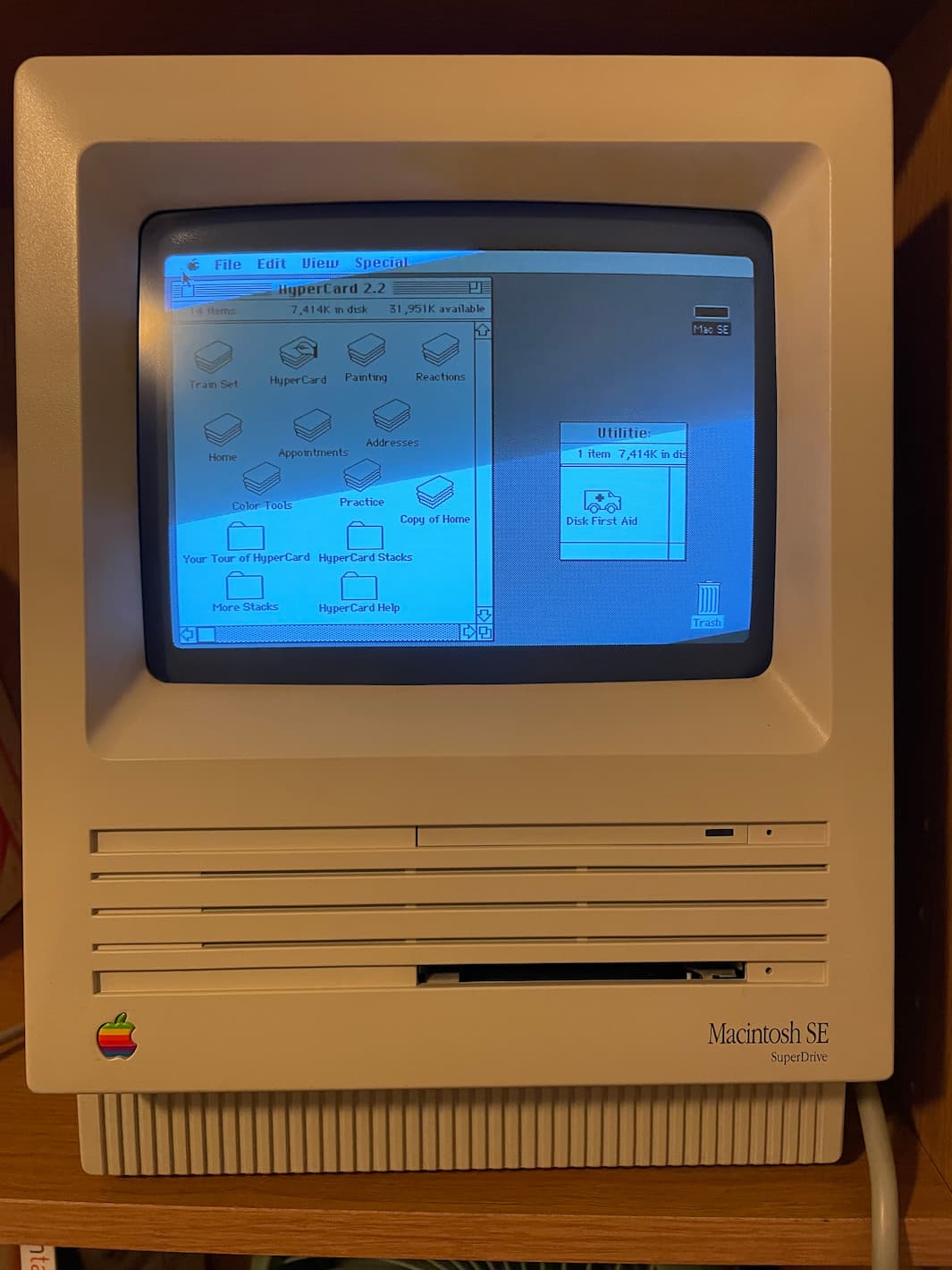
My last Mac purchase was at this year’s Vintage Computer Festival Southeast; I picked up a 2009 aluminum iMac. Now that Macs use Apple’s own processors instead of Intel, it’s harder to run other OSes like Linux on them. This iMac has an Intel processor, so I wanted it available to use as a Linux machine. It also runs Haiku, the continuation of the BeOS project—as a 90s Mac guy, that’s very exciting!
